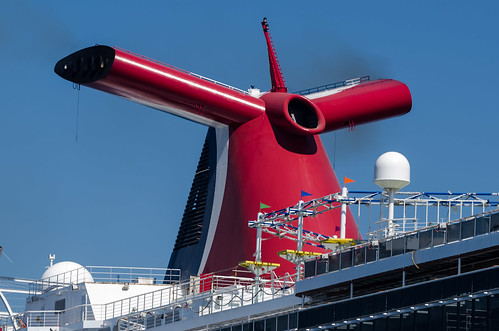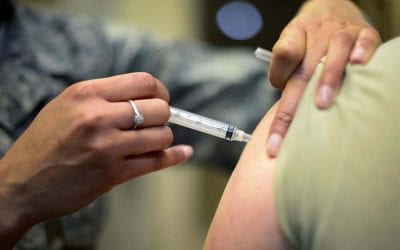The Carnival Triumph passengers are home from their ordeal, but the story is far from over. At this time, there are more questions than answers about the ill-fated cruise. Questions about Triumph’s readiness to sail, what happened when the fire in the engine room occurred and why, and why the ship was listing, are yet to be answered. Questions await about Carnival’s response to the emergency, and their readiness to handle such emergencies.
While questions persist, I think it’s possible to examine some of the problems of the cruise so cruise passengers can learn to be better prepared to handle serious emergencies and hopefully mitigate their effects.
Carnival reported approximately 900 U.S. citizen passengers of the 3,143 on the Triumph were traveling without passports, as is permitted under US law for that cruise.
Under U.S. law, U.S. citizens who board a “closed loop cruise” starting and ending at a U.S. port, traveling only to countries designated within the Western Hemisphere Travel Initiative, don’t need a passport. They may use a Passport Card, or government issued photo identification, along with proof of citizenship, such as a state issued birth certificate.
The Triumph, after it lost propulsion, was originally slated to be towed to Progreso, Mexico, with its passengers slated to fly home from there. That would have been very difficult for those 900 passengers.
U.S. citizens returning to the U.S. from another country by air are required to have a US Passport to reenter the U.S.
For example, if a medical or family emergency would require a cruise passenger to unexpectedly fly home, they would need their U.S. Passport to reenter the country.
The 900 passengers would have been given waivers to return to the U.S. from Mexico, but the paperwork and hassle they would have encountered would have made a miserable cruise that much worse.
In my years of travel, I have learned that no matter how carefully made, plans often go awry.
I can’t recommend more strongly to all U.S. citizens traveling internationally to always travel with your U.S. Passport, even on “closed loop cruises.”
Also, have a readily available copy of your passport when traveling internationally, in case it’s lost, stolen, or somehow destroyed. I keep a password protected, scanned copy of my passport in a pdf file in my smartphone, and in “the cloud” on Google Drive.
Many travelers take important prescription medication daily. No traveler can possibly know how long they might be stranded in an emergency.
In 2008 in Haiti, for example, some travelers encountering hurricanes which hit the island that year were stranded for a week or more. The Triumph, sitting dead in the water, took four days to be towed back to port.
Obtaining essential medications during an emergency is often impossible. While cruise ships have emergency pharmacy supplies, no passenger can realistically rely on their ship to carry the precise medications they regularly use.
Every traveler, including cruise passengers, should bring enough of their prescription medications to last at least a week beyond the length of the planned trip.
In addition to regular prescription medication, travelers should speak to their primary physicians about bringing along other prescriptions and over-the-counter medications, such as antidiarrheal, antihistamine, antibiotic, and anti-motion sickness medications, as well as typical pain and fever remedies.
Triumph passengers reported serious sanitation problems aboard the ship. Raw sewage was reported in hallways, on walls and in staterooms. There was little potable water. Exposure to raw sewage can have serious medical risks.
While I’m not a regular user of antiseptic soap, during emergencies using it while washing, especially with water of unknown quality, can help keep you safe. I always travel with a small container of antiseptic soap.
Food and drinking water were in short supply soon after the Triumph became disabled.
While it wouldn’t be enough to eat for four days, bringing along emergency snacks and keeping them in your stateroom, along with bottled water you purchase, is a great idea.
My wife and I always travel with some granola bars, trail mix, and other healthy snacks in quart baggies. For cruises, we keep fresh fruit from the ship and a supply of bottled water in our cabin at all times, the water mostly to take on shore excursions during the cruise, but also for emergencies.
When the power went out on the Triumph, leaving staterooms dark, and hallways and public spaces with minimal emergency lighting, it was disconcerting and difficult for adults and many children on the ship were frightened.
I never travel without a waterproof LED flashlight. They are longer lasting, more reliable, provide powerful light, and are generally lighter than standard flashlights.
Travelers should also always bring spare batteries and a backup power supply for their portable electric devices, smartphones and tablets.
Finally, for kids and adults alike, make sure you either have lots of batteries, or bring along something to help pass the time during an emergency which needs no power, such as a book, board game, puzzle books (with pencils), etc.
For a more complete list of suggestions for an emergency kit, take a look at my column, 15 travel emergency kit basics.
After many years working in corporate America as a chemical engineer, executive and eventually CFO of a multinational manufacturer, Ned founded a tech consulting company and later restarted NSL Photography, his photography business. Before entering the corporate world, Ned worked as a Public Health Engineer for the Philadelphia Department of Public Health. As a well known corporate, travel and wildlife photographer, Ned travels the world writing about travel and photography, as well as running photography workshops, seminars and photowalks. Visit Ned’s Photography Blog and Galleries.


